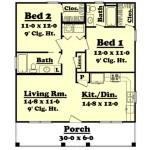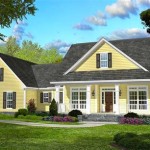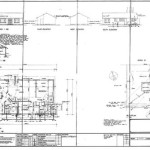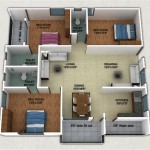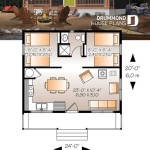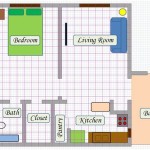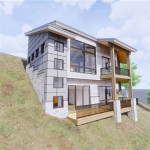Single Story Barn House Plans: A Practical Guide
Single-story barn house plans represent a growing trend in residential architecture, blending the rustic charm of traditional barn design with the convenience and accessibility of single-level living. These plans offer a unique aesthetic appeal while catering to diverse needs, from accessibility for aging individuals to simpler construction and maintenance.
This article explores the key considerations, benefits, and design elements involved in single-story barn house plans, providing a comprehensive overview for those considering this style of home. We will delve into factors such as space optimization, material selection, cost implications, and regional adaptations, offering insights into creating a comfortable and functional living space within the framework of a single-story barn design.
Understanding the Appeal of Single-Story Barn Houses
The allure of single-story barn houses extends beyond mere aesthetics. These designs offer several practical advantages that contribute to their increasing popularity. The single-story layout eliminates the need for stairs, making them ideal for individuals with mobility issues or those planning for aging in place. This design also simplifies tasks such as cleaning and maintenance by reducing the need to navigate multiple levels.
Furthermore, single-story construction often translates to lower building costs compared to multi-story structures. This is due to the reduced need for complex structural supports and specialized labor. The simplified design can also lead to faster construction timelines, allowing homeowners to occupy their new homes sooner.
The inherent aesthetic charm of barn-style architecture is another significant draw. Characterized by high ceilings, open floor plans, and exposed beams, these homes evoke a sense of rustic elegance and spaciousness. The use of natural materials, such as wood and stone, further enhances the connection to the surrounding environment, creating a warm and inviting atmosphere.
Key Design Considerations for Single-Story Barn House Plans
Designing a single-story barn house requires careful consideration of several key factors to ensure both functionality and aesthetic appeal. The following aspects play a crucial role in achieving a successful and well-balanced design:
Space Optimization: Maximizing usable space is paramount in a single-story layout. Careful planning is essential to ensure that each room is appropriately sized and efficiently utilized. Open floor plans are commonly employed to create a sense of spaciousness and facilitate natural light flow throughout the home. Utilizing vertical space with high ceilings and strategically placed lofts can also provide additional storage or living areas without expanding the footprint of the house.
Natural Light and Ventilation: Adequate natural light and ventilation are essential for creating a comfortable and healthy living environment. Large windows and skylights can be strategically placed to maximize sunlight exposure and reduce the need for artificial lighting. Properly designed ventilation systems, including cross-ventilation and strategically placed vents, can help regulate temperature and improve air quality.
Floor Plan Layout: The floor plan should be carefully designed to accommodate the specific needs and lifestyle of the occupants. Considerations should be given to the placement of bedrooms, bathrooms, kitchen, living areas, and any specialized spaces such as home offices or workshops. The layout should prioritize functionality, flow, and accessibility, ensuring that each area is easily accessible and connected to other relevant spaces.
Material Selection: Material selection plays a crucial role in both the aesthetic appeal and the structural integrity of a single-story barn house. Traditional barn designs often incorporate natural materials such as wood, stone, and metal. These materials can be sourced locally to reduce costs and environmental impact. The choice of materials should also consider the climate and weather conditions of the region, ensuring that the structure is durable and resistant to the elements.
Accessibility and Universal Design: Incorporating accessibility features into the design is crucial, especially for individuals with mobility issues or those planning for aging in place. This includes features such as wide doorways, ramps, grab bars, and accessible bathrooms. Universal design principles aim to create a home that is usable and accessible to people of all ages and abilities, ensuring that the home can be comfortably and safely occupied for years to come.
Variations in Single-Story Barn House Designs
Single-story barn house plans are not monolithic; they encompass a wide range of styles and adaptations to suit diverse preferences and regional contexts. These variations allow homeowners to personalize their homes while maintaining the core characteristics of barn-style architecture. Some common variations include:
Modern Barn Houses: This style combines the traditional elements of barn design with modern aesthetic sensibilities. Clean lines, minimalist interiors, and large expanses of glass are characteristic features. Materials such as steel and concrete may be incorporated alongside traditional wood and stone, creating a contemporary and sophisticated look.
Rustic Barn Houses: This style emphasizes the natural and organic elements of barn design. Reclaimed wood, exposed beams, and natural stone are frequently used to create a warm and inviting atmosphere. Interiors are often decorated with rustic furniture, vintage accents, and handmade crafts, enhancing the connection to the past.
Agricultural Style Barn Houses: This style aims to replicate the look and feel of a traditional working barn. Functional spaces such as workshops, garages, and storage areas are integrated into the design. The exterior may feature elements such as large barn doors, silos, and livestock pens, further enhancing the agricultural aesthetic.
Coastal Barn Houses: This style adapts barn design to coastal environments. Incorporating features such as large windows with ocean views, durable materials that can withstand salt air, and outdoor living spaces designed for relaxation and entertainment. Light and airy interiors are common, reflecting the coastal lifestyle.
Regional Adaptations: Single-story barn house plans can be adapted to suit the specific climate and cultural context of different regions. In colder climates, the design may incorporate features such as high insulation, passive solar heating, and wood-burning stoves. In warmer climates, the design may emphasize natural ventilation, shaded porches, and outdoor living spaces.
Cost Implications: Constructing a single-story barn house involves costs associated with materials, labor, permits, and site preparation. The choice of materials and the complexity of the design can significantly impact the overall cost. Local building codes and regulations may also add to the expense. Obtaining multiple quotes from contractors and carefully planning the budget are essential for managing costs effectively.
The cost of materials for a single-story barn house can vary depending on the type and quality of materials chosen. Reclaimed wood and locally sourced materials can often be more cost-effective than new or imported materials. However, the cost savings may be offset by additional labor required for preparing and installing reclaimed materials.
Labor costs can also vary depending on the location and the availability of skilled labor. Hiring experienced contractors and tradespeople is crucial for ensuring the quality and longevity of the construction. Obtaining multiple bids from contractors and carefully reviewing their qualifications and experience can help homeowners make informed decisions.
Permit fees and site preparation costs can also add to the overall expense of building a single-story barn house. It is important to research local building codes and regulations and obtain the necessary permits before starting construction. Site preparation may involve clearing land, grading the site, and installing utilities such as water, sewer, and electricity.
Environmental Considerations: Designing and building a single-story barn house presents opportunities to incorporate environmentally friendly practices. Using sustainable materials, such as reclaimed wood and bamboo flooring, can reduce the environmental impact of the construction. Incorporating energy-efficient features, such as solar panels, geothermal heating, and high-performance windows, can reduce energy consumption and lower utility bills.
Water conservation is another important consideration. Installing low-flow fixtures, collecting rainwater for irrigation, and designing drought-tolerant landscaping can help conserve water resources. Proper insulation and ventilation can also help reduce energy consumption and improve indoor air quality. By incorporating these environmentally friendly practices, homeowners can create a sustainable and eco-friendly living space.
The orientation of the house on the site can also impact its energy efficiency. Orienting the house to maximize solar gain in the winter and minimize solar gain in the summer can help reduce heating and cooling costs. Planting trees and shrubs around the house can provide shade and further reduce energy consumption.
Interior Design: The interior design of a single-story barn house should complement the architectural style and reflect the personal preferences of the occupants. Open floor plans can be divided into distinct living areas using furniture, rugs, and lighting. Exposed beams and natural wood can be highlighted to create a rustic and inviting atmosphere.
Choosing furniture and accessories that complement the barn-style aesthetic can enhance the overall design. Rustic furniture, vintage accents, and handmade crafts can add character and warmth to the interior. Incorporating natural elements, such as plants and flowers, can further enhance the connection to the surrounding environment.
Lighting plays a crucial role in setting the mood and creating a comfortable living environment. Natural light should be maximized with large windows and skylights. Artificial lighting can be used to supplement natural light and create a warm and inviting atmosphere. Dimmable lights and task lighting can be used to create different levels of illumination for different activities.
Landscaping: The landscaping surrounding a single-story barn house should complement the architectural style and blend with the surrounding environment. Native plants and natural materials can be used to create a sustainable and low-maintenance landscape. Incorporating outdoor living spaces, such as patios, decks, and gardens, can extend the living area and create a seamless transition between indoors and outdoors.
Considerations should be given to the placement of trees and shrubs to provide shade and privacy. Walkways and pathways can be created using natural stone or gravel. Water features, such as ponds and streams, can add beauty and tranquility to the landscape. By carefully planning the landscaping, homeowners can create a beautiful and functional outdoor space that complements the architectural style of the single-story barn house.
Embracing the Single-Story Barn House Lifestyle
Adopting a single-story barn house plan is not just about choosing a style of architecture; it is about embracing a particular lifestyle. This lifestyle often emphasizes simplicity, connection to nature, and a slower pace of life. These homes provide a tranquil retreat from the stresses of modern living, offering a space for relaxation, creativity, and connection with family and friends.
The open floor plans and large windows encourage social interaction and create a sense of community within the home. The rustic aesthetic and natural materials create a warm and inviting atmosphere that is conducive to relaxation and contemplation. The connection to the surrounding environment provides opportunities for outdoor activities, such as gardening, hiking, and birdwatching.
Ultimately, embracing the single-story barn house lifestyle involves creating a home that is not only aesthetically pleasing but also functional, sustainable, and aligned with the values and priorities of the occupants.

Single Story Barndominium Floor Plans 12 Great Ideas House Pole Barn

Trending Barn House Plans Houseplans Blog Com

Single Story Barndominium Floor Plans 12 Great Ideas One Bedroom House

Wildwood Barn Homes Floor Plans Style House

Single Story 6 Bedroom Modern Barn Home With Outdoor Living Floor Plan House Plans Homes Garage

Barn Style House Plans Home Sweet

Single Story Barndominium Floor Plans 12 Great Ideas Barn Homes House

Single Story Barndominium Floor Plans 12 Great Ideas

Barn Style House Plans Chic Designs With A Rural Aesthetic Blog Dreamhomesource Com

Barn Style House Plans Chic Designs With A Rural Aesthetic Blog Dreamhomesource Com


